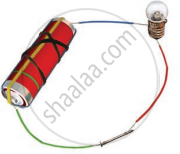Advertisements
Advertisements
प्रश्न
Fill in the blank spaces by choosing the correct words from the given list.
List: amalgam, chlorine, gallium, sodium chloride, silver chloride
A solution of a metal in mercury is called ________
उत्तर
A solution of a metal in mercury is called amalgam.
APPEARS IN
संबंधित प्रश्न
Fill in the blanks:
Metals react with acids to produce _________ gas.
The atomic number of an element Y is 16.
(a) What must an atom of Y do to achieve the nearest inert gas electron arrangement?
(b) Which inert gas is nearest to Y?
Name an alloy of lead and tin.
Give the composition of an alloy called solder. State its one property and one use.
Name two alloys of iron. What elements are present in these alloys?
Fill in the following blank with suitable word:
The alloy in which one of the metals is mercury is called an ...............
What elements are present in steel? How are the properties of steel different from those of pure iron?
What is an alloy? Give two examples of alloys.
Write ‘true’ or ‘false’ for the following statement.
Iodine acts as an antiseptic in the form of a tincture of iodine.
State the position of the following in the periodic table:
Iron and zinc
Take an element from an alkali metal and one from an alkaline earth metal and write an equation for their action with:
Hydrochloric acid,
Write name.
The nonmetal having electrical conductivity.
Write scientific reason.
Generally the ionic compounds have high melting points.
The electronic configuration of metal ‘A’ is 2,8,1 and that of metal ‘B’ is 2,8,2. Which of the two metals is more reactive? Write their reaction with dilute hydrochloric acid.
Aluminium: _______: gold : : electric insulator
Complete the following flow chart.

Which of the following is not a metal?
In the given figure, you find that the bulb glows when an iron nail is placed between two ends of wire. Complete the following sentences on the basis of this fact.

- ______ is a metal.
- Metals are good ______ of electricity.
Which metals are not solid at room temperature?
Compare the conductivity of metals and non–metals.
